-
Posts
2,406 -
Joined
-
Last visited
Content Type
Profiles
Forums
Gallery
Events
Posts posted by Ian
-
-
here's an example of Jean Baptiste Daniel-Dupuis's work in the form of a jeton struck for the shareholders /directors of the `Compagnie des Mines a Charbon D'Aniche'(Aniche coal mines). This example was actually struck circa 1890.
As an aside, what has happened to the images that were attached to some of the posts in this thread (?)
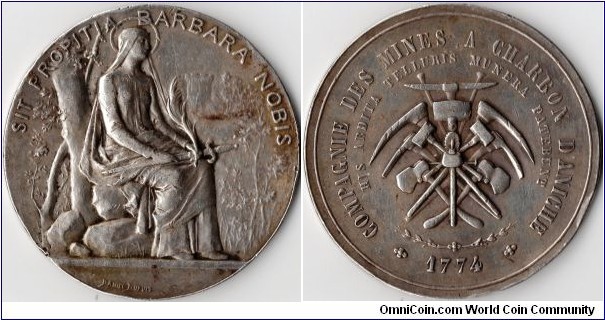
-
I'm not 100% sure to be honest, but i would hazard a guess that it would be along the same lines as casino chips (grub stakes
 ).
).
-
A reasonable (F/F+) example of a Charles I Scottish thirty shillings piece. This one is Sir John Falconer's anonymous issue struck at Edinburgh mint sometime between 1625 and 1649. Scottish arms in top left and bottom right of shield (reverse)
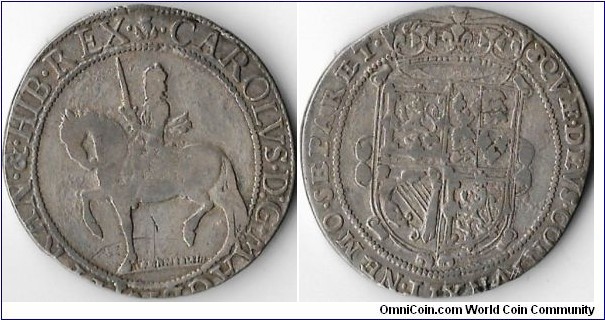
-
On 6/30/2013 at 11:08 PM, Vipersan said:
I posted the same question on another coin forum ..and it was suggested this was actually a die flaw ..and not uncommon..
rgds
VS
Just saw this post while looking for something else in this forum........gosh! it only took five years for me to notice it was there

...anyway.....the extra metal is as a result of a crack in the reverse die. When the coin was struck it forced the metal up through the crack to form the `splash' that you see (aka a `cud' amongst numisnuts like me). The die crack would most probably have started small and enlarged with each successive strike until it was no longer functional (ie broke up) broke. I recall a thread somewhere concerning `the death of a die' which talked about (and showed examples of coins (and the cuds produced) as the die deteriorated.
With regards to these particular large coins, it is not too unusual to find evidence of die cracks /flan splits. To me it only adds a certain additional `character' to the coin.
-
an Ae21 struck between 325 -275 BC from Arpi, a greek settlement in the northern part of Apulia, Italy.
Obverse: Zeus bust
Reverse: boar running to right /spear head above and greek lettering below (translates to `ARPAIOI')
Coin is in much better condition than this poor scan would have you believe. Reference for the coin can be found in Historia Numorum coin number 642 (illustrated in plate 12)
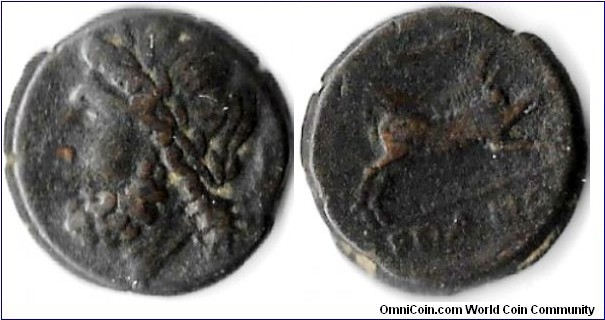
-
Yep. That is indeed the literal translation.
Perhaps the message underpinning it is that your fortune is best served by keeping your cool while everyone around is losing theirs (?)

-
The `Heur/ Malheur' janiform heads of Good luck and Bad Luck is the common obverse for a series of french silver gaming tokens originally struck after 1832. Each jeton in the series carries its own little gem of wisdom or worthy observation in relation to the topic of `gambling'. The one below depicts a tempest with `tranquility' at the centre...along with the words `calme au milieu des orages' in the exergue.
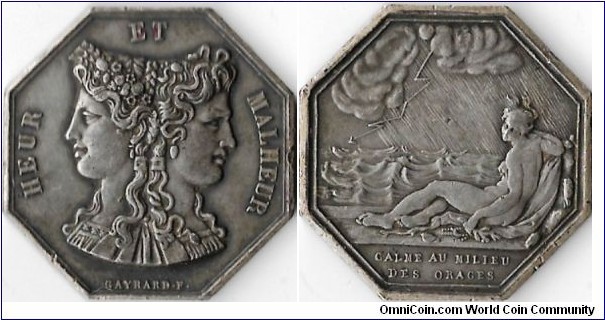
-
my latest addition. Struck somewhere between 1820 and 1830 for the Assurances Maritimes de Rouen, an apparently short-lived maritime assurer.
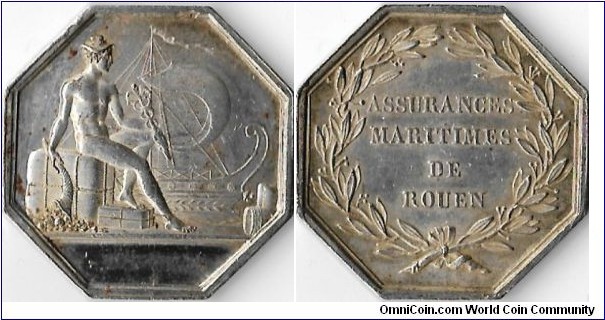
-
possibly minted for use as an advertising token as well as a means of instilling confidence in the trustworthiness and ongoing `permanence of service' of the blanchisseuse concerned (?). That is `you can be assured that when you come back to pick up your clothing it will be here waiting for you'. (?)
-
3 hours ago, Art1.2 said:
I’m guessing that hygiene was different in those days. 😱
I can think of less hygienic ways they may very well have used to transport small coins, although I have yet to come across any learned reference in that respect.
-
On 1/3/2019 at 4:29 AM, thedeadpoint said:
You forget I live in America where a building built before 1900 is relatively rare.

that may well be true....but someone somewhere was providing `assurance' in relation to buildings in the USA; assurance against the risk of accident; life assurance (in some form or another); and various forms of `risk' associated with transport /trade long before the 1900's.
Those darn Europeans brought their concepts of syndication and risk amelioration with them when they came over to the new world.
-
...this one stuck in bronze (in 1899) for the `Societe Mutuelle de Prevoyance Pour La Retraite' to commemorate its 50th anniversary. This was a company providing savings /pension schemes for retirement purposes.
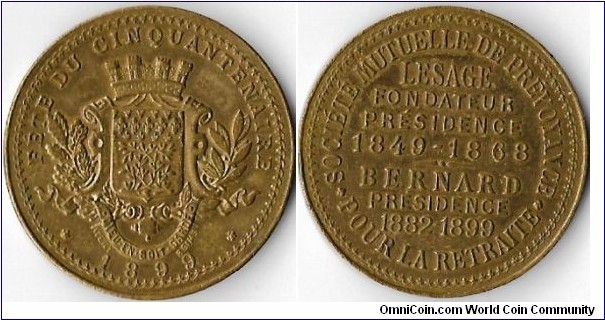
-
this one was engraved by Oscar Roty and struck sometime in the 1880's for `L'Ancienne Mutuelle de Rouen' a french assurer inaugurated in 1817
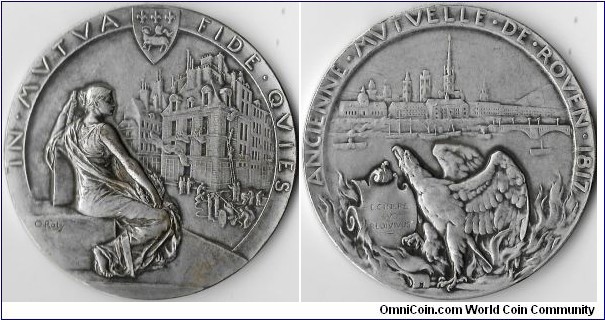
-
error/ please delete
-
Good to hear from you Bill. Sorry to learn about your health difficulties but very glad to see that you are on the mend.
Ian
-
.....this one was struck in Bronze for `La Salamandre' on the occasion of its 25th anniversary.
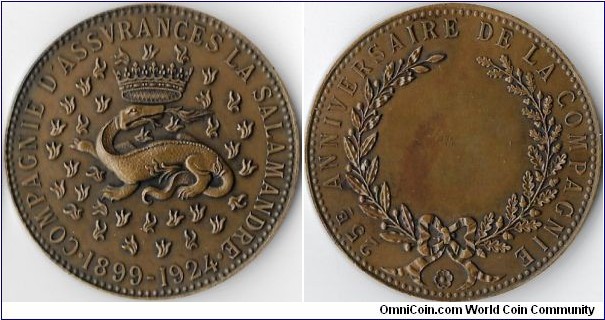
-
....this one was struck for the `Compagnie General D'Assurances Remoises'
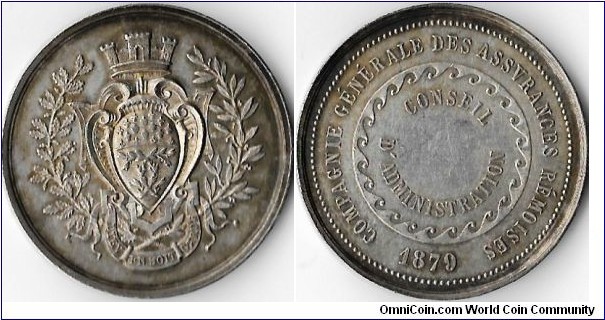
-
...this one was struck in bronze for 'La Prevoyance Commercial ' (pensions/retirement provision)
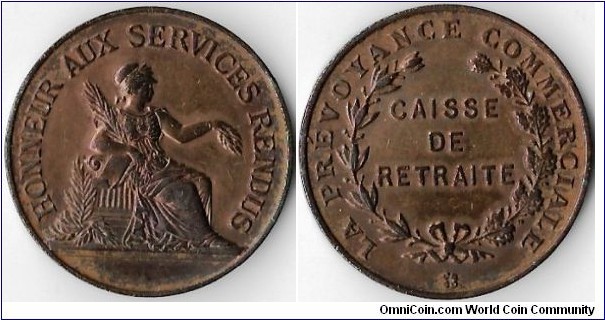
-
....this one was struck for `La Mutuelle de Poitiers'
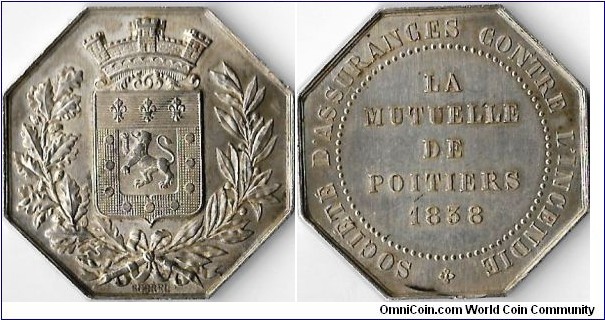
-
(?) The 1850's is actually rather late in the day. There are a few example assurance jetons in this thread that were struck in the late 1600's /early 1700's
-
This one was struck for a mutual society covering the risk of accidents
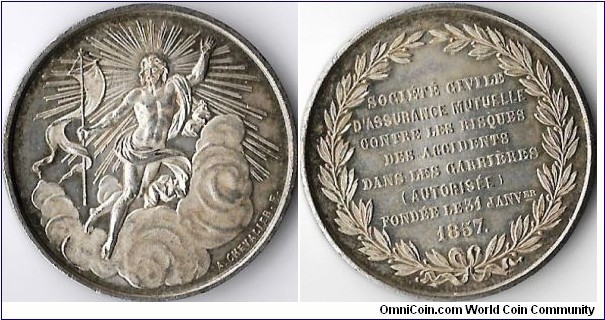
-
This one for `Le Monde' (fire risks)
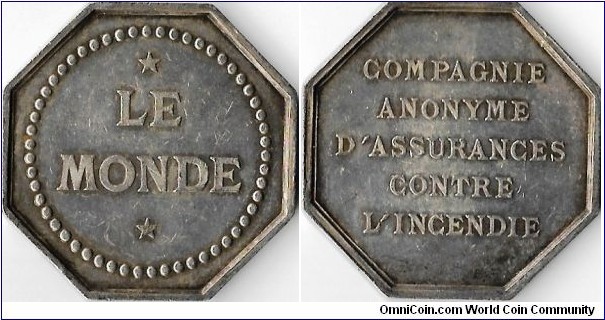
-
.....some would have us believe that small coins were carried by mouth. Not the most hygienic method of keeping hold of coins.
-
This was struck for `La Paternelle' (fire risks)
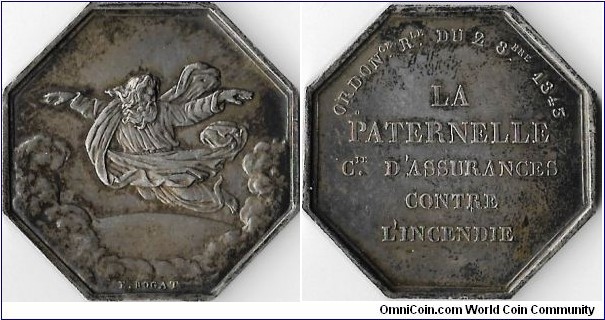


silver gaming tokens
in Exonumia (Tokens, Medals, etc) Forums
Posted
yes..........but I have to say that the silver USA gambling chips i've actually seen are denominated for $10, not $1.